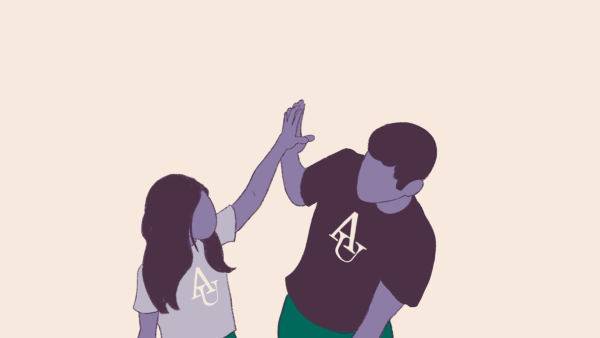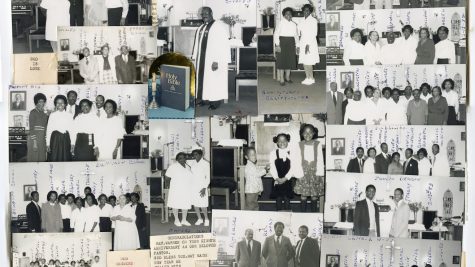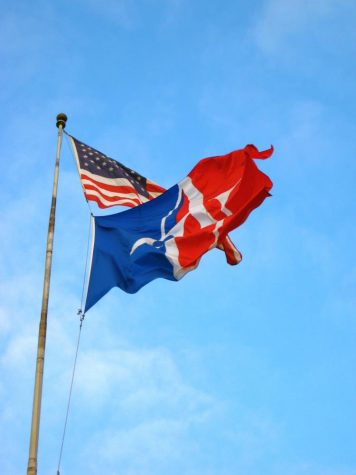‘Does That Major Even Exist?’: Public Health at AU
Even the campus itself, enclosed by two updated buildings on either side, reinforces the domination of The School of International Studies and The School of Public Affairs. For many of us, the lives of chemistry and biology majors remain a mystery shrouded in intimidating equations and chemical compounds. However, the budding success of the Public Health major may mark a resurgence of science at American.
Although it’s not the usual selling point, American boasts flourishing math and science departments. According to its annual newsletter, the pre-medical program had 88 percent of its students attend medical school after the 2011 school year. And under the direction of Professors Jeffery Adler and Joshua Lanksy, two undergraduate mathematics students proved a complex theory that may have implications for the natural world and other branches of mathematics.
But how do professors attract humanities students to these programs who have strong aversions to math and science? The answer may reside in the rise of interdisciplinary programs that bridge social and natural sciences.
The Public Health program, launched as a major this fall, is the most recent example. Professors from CAS across several disciplines came together and combined psychology, history, and education, finally pitching the idea to the associate dean.
According to the major description, public health constitutes “one of the greatest mandates of our time.” History Professor Alan Kraut echoed this idea. As an expert in the history of medicine in the United States, Kraut was an essential member of the CAS initiative.
In its infancy, Kraut is hopeful about the new major. “It’s a really terrific initiative,” he stated. “I’m really very high on the program.”
The program requires that students take classes ranging from biology to philosophy, providing a holistic core program. And to bolster the science aspect of the major, the university just hired an epidemiologist. Within the program, students choose focuses in Global Health, Health Science, and other policy tracks.
Kraut sees strength in this interdisciplinary approach. Learning about an issue from a multitude of perspectives is “very stimulating.”
For instance, studying the history of public health movements, for instance, is important to understand how health care systems continue to evolve.
“Think of what your life would be like if water wasn’t pure, your food wasn’t pure,” he commented.
This comprehensive approach constitutes a growing trend among students. According to Professor Maria de Jesus, who teaches courses in International Relations, the public health classes are gaining traction: “I’ve had more students ask me about health and how to pursue careers in health.”
In her own studies, the intersection between health and culture always fascinated De Jesus. She saw value in consulting economists, political scientists and anthropologists to investigate the multidimensional nature of health care, as well as synthesizing different epistemologies.
“To me, it’s the perfect marriage,” she said. “There is a demographic imperative for understanding culture; we are a part of a global village.”
De Jesus is a strong advocate of the multidisciplinary approach. By taking a variety of classes, students grasp the determinants that affect health, such as socioeconomics and cross-cultural communication. She sees strength in the fact that American offers a public health major instead of a traditional pre-med program.
By looking at health issues not solely from a biomedical standpoint, students learn to understand health within broader issues. This major, she asserts, is on the cutting edge of interdisciplinary fields: “AU is in a particularly strong position to do that. What we do have is a broader social context.”
For students, the program provides a unique opportunity to study both science and international relations. Nicole Cultuli, a freshman, wrestled between the two disciplines as she tried to pin down a major.
“My senior year I took Advanced Placement biology and Current Issues, [an introduction to International Relations] and I absolutely loved both of them. I thought I would have to choose between science and IR, and I came in as an IR major. I started rethinking my choice and considering medicine again and wanted a way to combine them,” she said.
Although she concedes that science majors are unpopular at American, the buzz around the Public Health program suggests the discipline is on the rise.
After attending an informational meeting, Cutuli learned more about the interdisciplinary approach to the program, and was encouraged to see a strong turnout. The audience included undergraduates, graduates, and even alumni.
After the meeting, Cutuli was visibly and audibly enthused by the program’s potential. “The possibilities are looking good because of the resources and the professors.”
Photo by Amin Tabrizi via Flickr.











